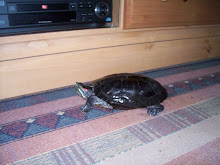
In the first pages of the Introduction to Walt Disney: The Triumph of the American Imagination, author Neal Gabler confronts head-on and convincingly debunks the rumor that Disney was frozen cryogenically from the neck up. The half-dozen end notes attached to this one story show how the book is well-researched: about 20 percent of the volume consists of end notes, many from personal interviews and research in the Disney archives.
Disney wanted to be an animator and Gabler answers a question that puzzled me as a child watching the 1960s NBC TV show: just what did Uncle Walt do? Interestingly, Gabler reports that people in his own company asked the same question. A modern comparison I thought of was Bill Gates, who started out as a code jockey but eventually became the guiding force and first principle that moved everything that the company did.
Money is the subtext of the Disney story. In debt on and off for most of the early years of the company, plowing whatever profits he made back into the firm, Disney jumps the shark when the company becomes wildly successful and art takes a back seat. The dedication to pushing the artists and staff to excel in producing SNOW WHITE and DUMBO for example in the early years, is lost after World War II. The studio becomes an arm of the federal government in producing training and propaganda films and after the war, in a chapter called “Adrift,” Gabler describes how Disney finally succumbs to his partner/brother Roy (and to his creditors) to spend less money on animation and show bigger profits. CINDERELLA and related merchandising (a field that Disney invented) becomes a hit that saves the company from going under in 1950.
From this point on, any of the love and camaraderie that went into making animation is gone and Walt is focused on one goal: to make money to finance
For a bio of a man who made many comedy cartoons, I was expecting a little more humor in the book, which might mean that comedy is a serious business. If you’ve sat through Charlie Rose with Steve Martin, deconstructing the art of funny, you’ll know what I mean. About the only funny passage in the book is not from a scene in a short or movie, but from animator Ward Kimball. In describing Disney’s attitude toward women, Kimball said, “He didn’t trust women or cats. Almost of his villains were either women or cats.”
Disney creates Mickey Mouse in the 1920s as an edgy bad boy who evolves into a suburban home owner with a dog. Disney also evolves as someone who is hailed as a folk artist in the beginning of his career and vilified as the personification of bland. Gabler is a good reporter and gives you enough information to make your own conclusion.

No comments:
Post a Comment